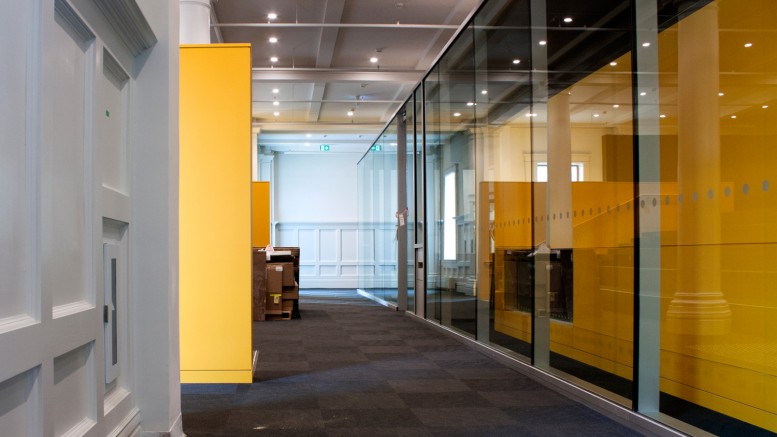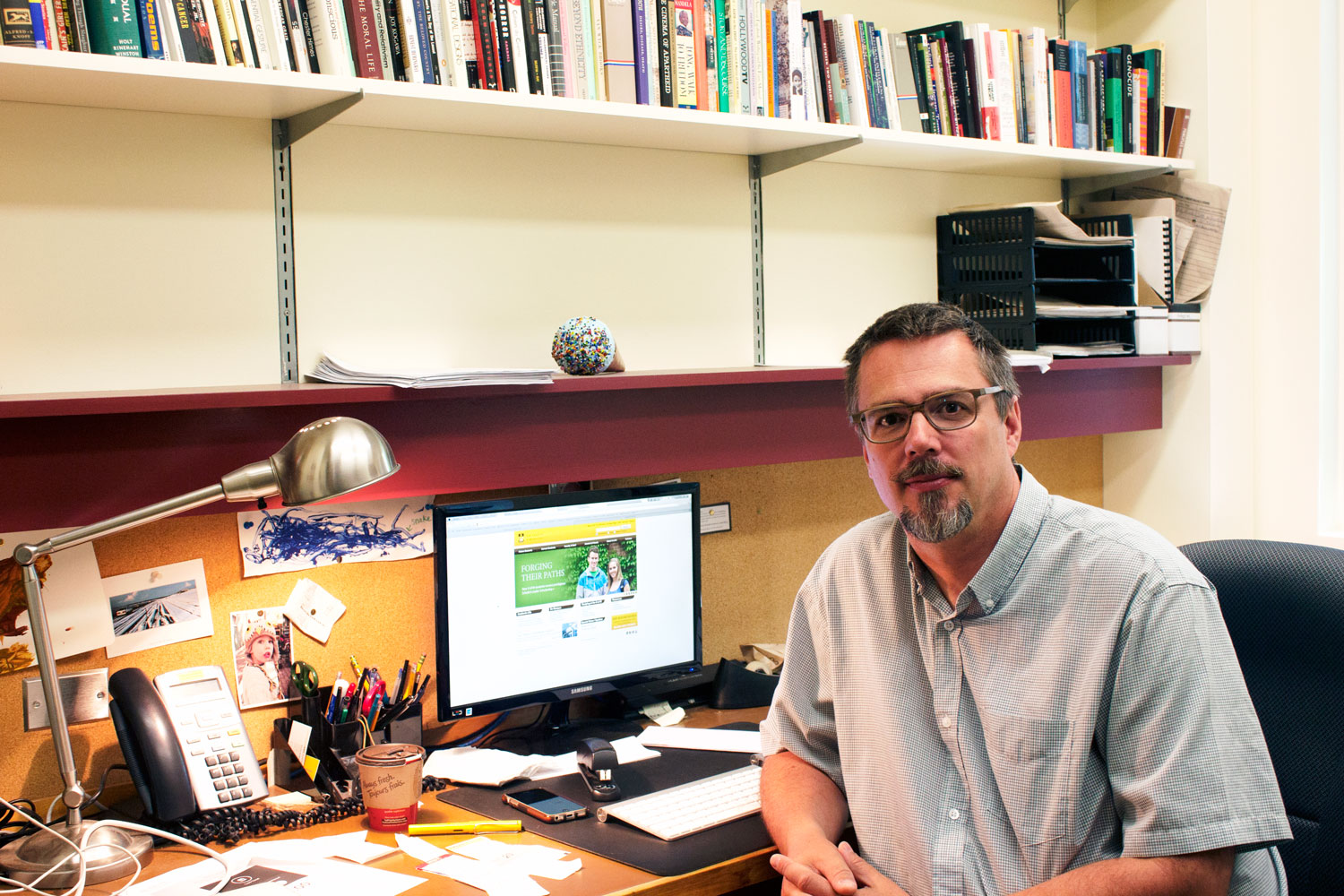Transformation of the century-old Taché Hall at the University of Manitoba has finally made significant progress toward the university’s goal of bringing together the institution’s theatre program, school of art, and the Desautels faculty of music under one roof.
As part of a wider modernization plan to restore some of the aging buildings across campus, conversion of the historic Taché Hall student residence building into phase one of the Taché Arts Project has finally gained enough traction to open its doors.
The first phase of the project – the new ARTlab building for the school of art – opened in 2012, while phase two – the renovation of Taché Hall proper for the faculty of music – is under construction and partially open now. Phase three of the project – the 500-seat Marcel A. Desautels Auditorium – has yet to be built.
The new music building is set for completion in 2017, according to John Danakas, executive director of public affairs at the U of M. The first portion of the music facility, which includes the music library, office space, practice rooms, and two classrooms, is essentially complete.
The total cost for the music building will be $90 million.
The university is aiming to raise $35 million towards the Taché Arts Project as part of the Front and Centre campaign. Construction of new buildings and rejuvenation of several historic structures falls under what the university calls Project Domino.
The Taché Arts Project, initially announced in 2008, involves converting the old student residences at Taché Hall into a 200,000-square-foot complex. Located adjacent to the ARTlab, the music facility will also eventually offer a theatre for the Black Hole Theatre Company, a concert hall, and electroacoustic, jazz, and multimedia studios for specialized sound requirements to meet the unique needs of the faculty of music.
The building that previously housed the faculty of music was designed for only 60 students, forcing the faculty to use spaces across campus including the Education building and University College.
The new facility is set to host 300 students with on-site classrooms. However, only two classrooms are ready for this term. Until further construction progresses, the school will continue to host many of its courses from classrooms outside of their new headquarters.
With concentrated music and art facilities gathered together in one of the most central, high-traffic areas on campus, Edmund Dawe, dean of the Desautels faculty of music, said that the location demonstrated the importance of the university’s music and arts program as a local and international destination.
“We’ve been building the reputation of the program so that when the facilities are ready, there is no question in my mind that we will absolutely have the most impressive music facilities of any music program in Canada when this is done,” Dawe said.
Dawe was generally happy with what the facility has to offer and the progress made thus far, which he said has been invigorating and, at times, frustrating.
“We were in a situation in the old building where students were having to practice in two closets on either side of the entrance, in the stairwells, washrooms, and now they come in and we have 40 practice rooms,” he said.
Dawe was particularly pleased to see that music students were already using the sound-sealed isolation spaces to practise, with limited sound escaping from the rooms into the main hallways.
Kieran Labossière, senior stick of the Faculty of Music Students’ Association, told the Manitoban that he is impressed with the new practice rooms and the fact that courses are going to be offered directly from the building, alleviating some of the difficulties and hazards for music students who used to trek their instruments across campus.
“It is such a relief to not be in the old buildings. While we still have to do some things in them, this is still much better,” he said.
“I went to a class inside a music building, which was kind of a novelty […] It’s clean, it’s not water-damaged, our office isn’t water-damaged, it doesn’t flood, just generally like ‘Oh, good, there’s no asbestos risk.’”




